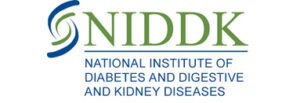Decoding immune function at the atomic level
Research at the Sgourakis Lab sheds light on the dynamic molecular processes which determine immune recognition, signaling and the formation of long-term memory against viral, tumor and autoimmune targets.
To address these questions, we integrate cutting-edge structural biology tools, such as Nuclear Magnetic Resonance (NMR) Spectroscopy and X-ray crystallography, with complementary biophysical and biochemical techniques, computational modeling, and functional assays. The Sgourakis Lab’s efforts are done in close collaboration with the vibrant research community at the Children’s Hospital of Philadelphia (CHOP) and the University of Pennsylvania.
We are affiliated with:
Targeting peptide antigens using a multiallelic MHC I-binding system
Du H, Mallik L, Hwang D, Sun Y, Kaku C, Hoces D, Sun SM, Ghinnagow R, Carro SD, Phan HAT, Gupta S, Blackson W, Lee H, Choe CA, Dersh D, Liu J, Bell B, Yang H, Papadaki GF, Young MC, Zhou E, El Nesr G, Goli KD, Eisenlohr LC, Minn AJ, Hernandez-Lopez RA, Jardine JG, Sgourakis NG*, Huang PS*., Nat. Biotech. 2024 Dec 13 doi: 10.1038/s41587-024-02505-8
Sun Y, Pumroy RA, Mallik L, Chaudhuri A, Wang C, Hwang D, Danon J, Goli KD, Moiseenkova-Bell V, Sgourakis N. Proc. Natl. Acad. Sci. U.S.A. 2025 Jan 9. doi: 10.1073/pnas.2416992122
Sun Y, Florio TJ, Gupta S, Young MC, Marshall QF, Garfinkle SE, Papadaki GF, Truong HV, Mycek E, Li P, Farrel A, Church NL, Jabar S, Beasley MD, Kiefel BR, Yarmarkovich M, Mallik L, Maris JM, Sgourakis NG. Sci. Immunol. 2023 Dec 1. doi: 10.1126/sciimmunol.adj5792.
McShan AC, Flores-Solis D, Sun Y, Garfinkle SE, Toor JS, Young MC, Sgourakis NG. Nat. Commun. 2023 Dec 11. doi: 10.1038/s41467-023-43654-9.





